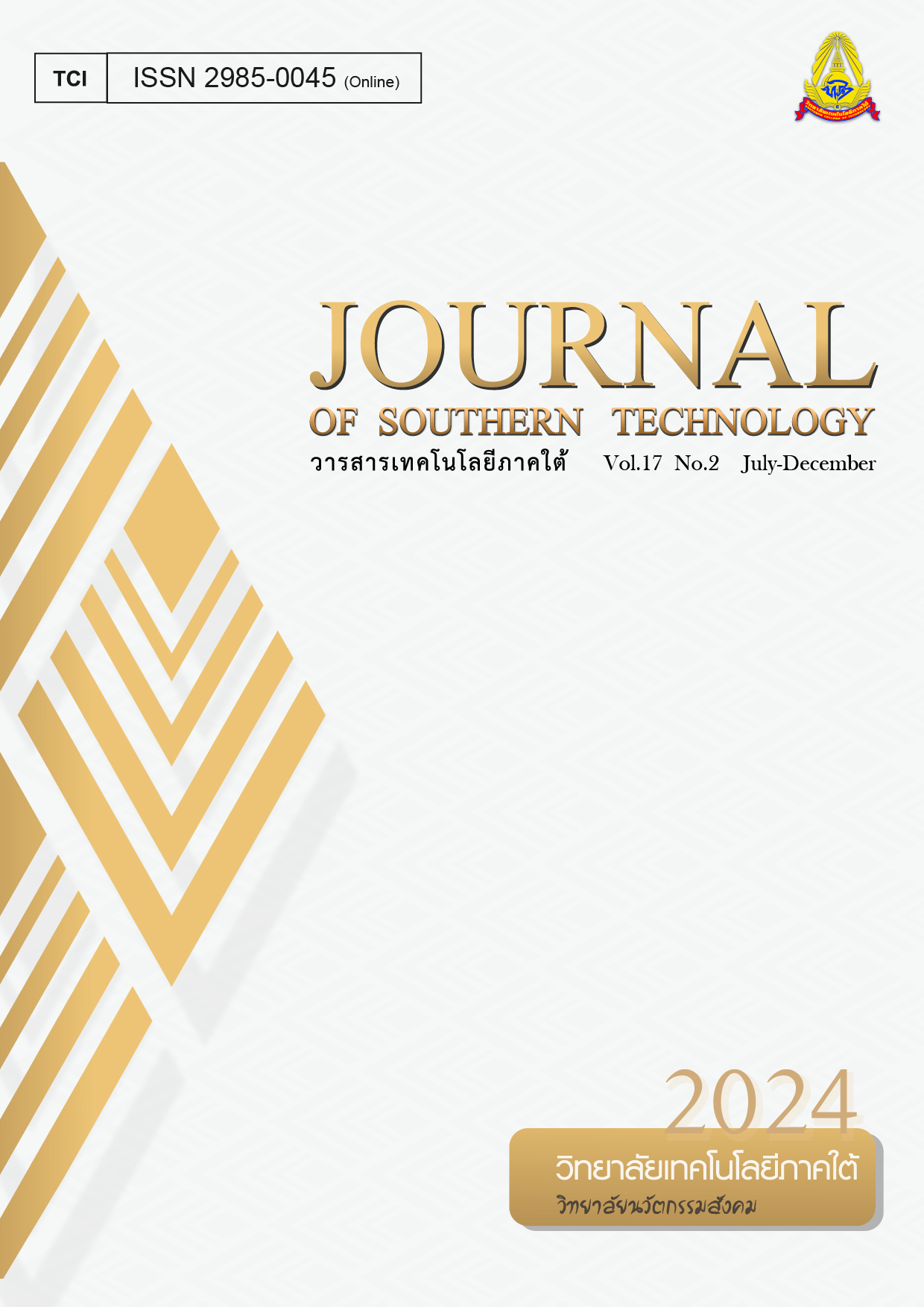การศึกษาลักษณะรูปแบบและปัญหาการใช้คำสลับลำดับคำ ในภาษาจีนของนักศึกษาไทย
Main Article Content
บทคัดย่อ
คำสลับลำดับคำ เป็นคำที่มีคุณลักษณะพิเศษในการสร้างคำที่เป็นพยางค์คู่ที่มีความหมายเกี่ยวข้องกัน หรือความหมายที่แตกต่างจากเดิม เมื่อสลับลำดับการวาง ส่งผลให้เกิดข้อผิดพลาดสับสนในการใช้คำเป็นจำนวนมาก การวิจัยครั้งนี้ มีวัตถุประสงค์เพื่อ 1) ศึกษาวิเคราะห์ลักษณะรูปแบบของคำสลับลำดับคำในภาษาจีน 2) ศึกษาปัญหาและข้อผิดพลาดในการใช้คำสลับลำดับคำในภาษาจีน และ 3) ศึกษาแนวทางแก้ไขปัญหาการเรียนการสอนในด้านการใช้คำสลับลำดับคำในภาษาจีนให้ถูกต้องและเป็นระบบ กลุ่มตัวอย่างที่ใช้ ได้แก่ นักศึกษาชั้นปีที่ 3-4 ของมหาวิทยาลัยจำนวน 5 แห่ง รวมทั้งสิ้น 122 คน โดยวิเคราะห์เก็บข้อมูลในการวิจัยจากคำสลับลำดับคำในภาษาจีน และแบบทดสอบ วิเคราะห์ข้อมูลด้วยความถี่ ร้อยละ การทดสอบที และค่าความแปรปรวนทางเดียว ผลการวิจัย พบว่า 1) การศึกษาวิเคราะห์ลักษณะรูปแบบของคำสลับลำดับคำในภาษาจีน ด้านรูปแบบทางความหมาย แบ่งได้เป็น 3 รูปแบบ ด้านรูปแบบทางโครงสร้างของคำ ส่วนใหญ่เป็นรูปแบบประสมแบบรวมคำ และแบบความขยาย และรูปแบบทางชนิดหน้าที่ของคำส่วนใหญ่เป็นรูปแบบ “คำนาม-คำนาม” 2) ปัญหาและข้อผิดพลาดในการใช้คำสลับลำดับคำในภาษาจีนของนักศึกษาไทย พบว่า 2.1) ความเข้าใจการใช้คำสลับลำดับคำในภาษาจีน มีอัตราความถูกต้องมากกว่าร้อยละ 50 2.2) ผู้เรียนมีความเข้าใจต่อลักษณะประเภทชนิดของคำอยู่ในระดับสูง 2.3) คำที่พบบ่อยผู้เรียนจะระบุความหมายถูกต้อง แต่คำที่มีปัญหาในการใช้เป็นคำที่มีระดับคำยากและไม่ค่อยปรากฎในชีวิตประจำวัน รวมถึงคำที่ยังคงความหมายใกล้เคียงเดิม และ 2.4) ผู้เรียนมีความเข้าใจในการใช้คำจากการแต่งประโยคในอัตราร้อยละ 83 ทั้งนี้จากผลการหาค่าเฉลี่ย พบว่า ชั้นปี และสถาบันที่แตกต่างกันจะมีคะแนนสอบที่แตกต่างกันอย่างมีนัยสำคัญทางสถิติที่ระดับ .05 และ 3) ผลจากการศึกษาสามารถนำคลังข้อมูลข้อผิดพลาดชนิดนี้มาใช้วิเคราะห์และคาดการณ์ปัญหาของผู้เรียน เพื่อเป็นแนวทางในการแก้ไขปัญหาการเรียนการสอนและเพิ่มประสิทธิภาพในการเรียนการสอนได้
Article Details

อนุญาตภายใต้เงื่อนไข Creative Commons Attribution-NonCommercial-NoDerivatives 4.0 International License.
- ผู้เขียนต้องยินยอมปฏิบัติตามเงื่อนไขที่กองบรรณาธิการวารสารกำหนด และผู้เขียนต้องยินยอมให้บรรณาธิการ แก้ไขความสมบูรณ์ของบทความได้ในขั้นตอนสุดท้ายก่อนเผยแพร่
- ลิขสิทธิ์บทความเป็นของผู้เขียน แต่วารสารเทคโนโลยีภาคใต้คงไว้ซึ่งสิทธิ์ในการตีพิมพ์ครั้งแรก โดยเหตุที่บทความนี้ปรากฏในวารสารที่เข้าถึงได้จึงอนุญาตให้นำบทความไปใช้เพื่อประโยชน์ทางการศึกษา แต่มิใช่เพื่อการพาณิชย์
เอกสารอ้างอิง
Apaipong, A. (2020). The error analysis noun classifiers in Mandarin related Chinese sentence structure of Thai students and teaching advices. Panyapiwat Journal, 12(1), 315-324. [In Thai]
Bandhumedha, B. (2002). Structure of Thai (14th Printing). Bangkok: Ramkhamhaeng University. [In Thai]
Bao, J. (1996). Also talk about Inverse Morphemes Word. Journal of Tianjin Normal University (Social Sciences), 22(6), 70-73. [In Chinese]
Cao, T. (2000). A study on the same- morpheme and contrary-order synonym of modern Chinese. Journal of Jinan University (Philosophy & Social Sciences Edition), 22(5), 57-64. [In Chinese]
Chutsapy, K., & Pengdip, K. (2022). A study of synonyms in Chinese verbs. Aksara Pibul Journal, 3(1), 60-73. [In Thai]
Corder, S.P. (1967). The significance of learner’s errors. IRAL - International Review of Applied Linguistics, 5(1-4), 161-170.
Ding, M. (1957). The relationship between the structure, form and meaning of the same morphemes word. Academic Monthly, 1(02), 48-54. [In Chinese]
Ding, G., & Peng, D. (2006). Mental recognition of Chinese words in reverse order: The relationship between whole word processing and morphemic processing. Contemporary Linguistics, 8(1), 36-45. [In Chinese]
Hou, M. (1987). Development and normative problems of inverse morphemes word. Language Planning, 31(3), 13-18. [In Chinese]
Huang, L. (2006). A Study of Disyllabic Words of the Same Morpheme and Formation of Reverted Order in Modern Chinese (Master’s Thesis). Huazhong University of Science and Technology, Wuhan. [In Chinese]
Liu, F. (2007). On vocabulary teaching in TCFL through a study of the reverse-ordered words formed with the same morphemes in the HSK Word-list. Journal of Yunnan Normal University (Teaching and Research on Chinese as A Foreign Language Edition), 5(3), 40-46. [In Chinese]
Modehiran, P. (2005). Correction Making Among Thais and Americans: a Study of Cross-Cultural and Interlanguage Pragmatics (Doctoral Dissertation). Chulalongkorn University, Bangkok. [In Thai]
Nuritamon, S. (2022). Analysis of grammatical errors in writing Chinese sentences by students of the School of Liberal Arts, University of Phayao. Journal of Humanities and Social Sciences Mahasarakham University, 41(6), 135-152. [In Thai]
Prachanant, N. (2006). Pragmatic Transfer in Responses to Complaints by Thai EFL Learners in the Hotel Business (Doctoral Dissertation). Suranaree University of Technology, Nakhon Ratchasima Province. [In Thai]
Sippapattanagorn, K., Wasuntarasobhit, S., & Tongpoon, P.A. (2015). Pragmatic transfer: refusal strategies of Thai EFL Learners. SDU Research Journal Humanities and Social Sciences, 10(2), 213-234. [In Thai]
Somchanakit, K. (2018). Pragmatic transfer in the speech act of complaints by Thai JFL Learners. Inthaninthaksin Journal, 13(1), 189-222. [In Thai]
Sun, D. (2012). The Study on Modern Chinese Reverse Order with The Prime Word and Chinese Teaching as a second Language for Thai Students (Master’s Thesis). Southwest University, Chongqing. [In Chinese]
Tan, R. (1995). New Research in Lexicology. Beijing: Language & Culture Press. [In Chinese]
Tang, J. (2004). Analysis of modern Chinese Inverse Morphemes Word. Linguistic Research, 3(2), 32-34. [In Chinese]
Tang, S. (2010). Discuss on the reverse-ordered words formed with the same morphemes and their importance in Chinese language teaching. Wenjiao Ziliao, 9(1), 73-74. [In Chinese]
Wang, J. (2012). A Study on Inverse Morphemes Word Pairs when Teaching Chinese as a Foreign Language (Master’s Thesis). Shenyang Normal University, Shenyang. [In Chinese]
Wang, Y. (2019). Research of Inverse Morphemes Word Pairs in Teaching Chinese as a Foreign Language (Master’s Thesis). Hunan University. [In Chinese]
Xing, H. (2003). An analysis of the error compound words used by foreign learners of Chinese. Chinese Teaching in The World, 66(4), 67-78. [In Chinese]
Xu, J. (2012). A research of AB-BA same-morpheme-and-contrary-order synonyms based on the HSK Dynamic Corpora. The 5th Beijing Postgraduate Forum on Teaching Chinese as a Foreign Language. [In Chinese]
Yang, B. (1999). A preliminary study on the flow of Inverse Morphemes Word etymology. Journal of Guangxi University for Nationalities (Philosophy and Social Science Edition), 22(3), 103-106. [In Chinese]
Yang, F. (2007). The Study on Modern Chinese Inverse Morphemes Word Pairs and Teaching Chinese as a Foreign Language (Master’s Thesis). Sichuan University, Chengdu. [In Chinese]
Ye, C. (2001). Words formed with the same morphemes in the opposite order and the application of such words in the teaching of Chinese to Foreigners. The Northern forum, 42(6), 105-108. [In Chinese]
Zhang, H. (2010). Studies on Chinese Vocabulary as a Second Language Teaching. Beijing: Peking University Press. [In Chinese]
Zhang, W. (2013). Analysis of reverse order words and related biases in teaching Chinese as a foreign language. The 9th International Conference on Chinese Language Teaching, pp.718-726. [In Chinese]
Zhao, H. (2007). A brief discussion on the types of modern Chinese inverse morphemes word. Modern Chinese, 3(4), 47-48. [In Chinese]

